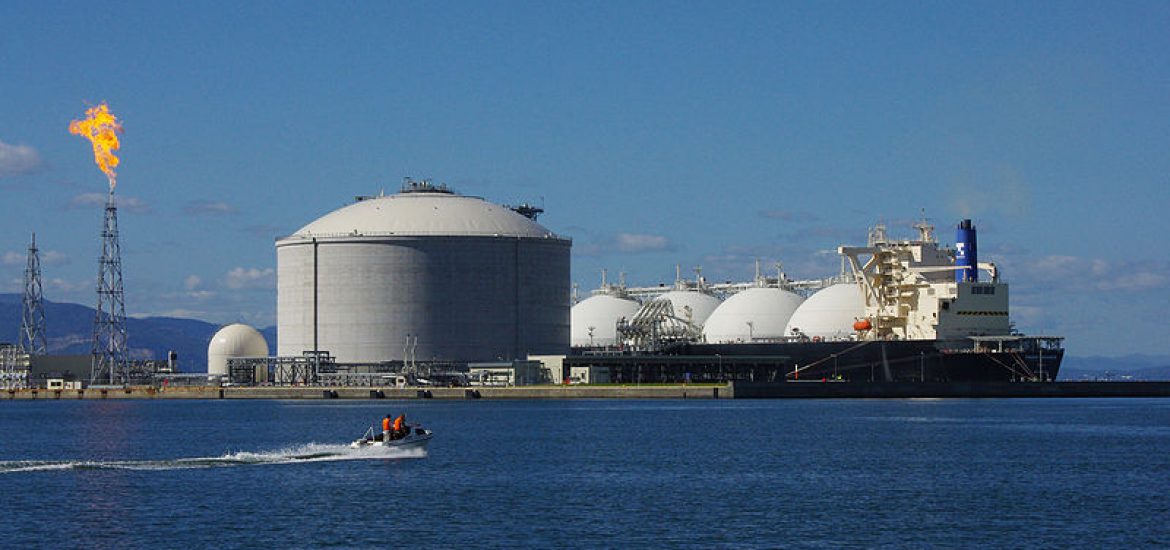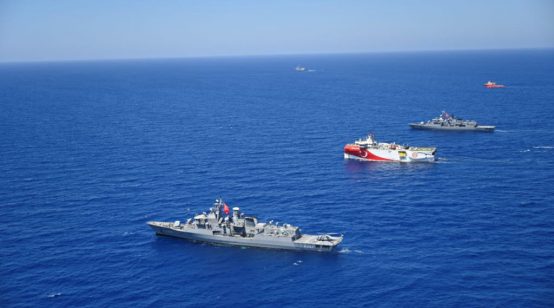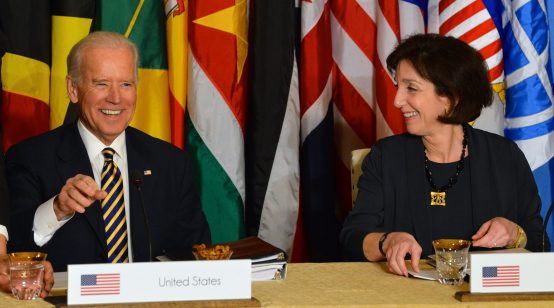
The resurgence of U.S. oil and gas production in recent years has been nothing short of staggering. In 2013, the United States once again became world’s the largest oil producer – a title it previously held from 1860-1897 and 1902-1975 – thanks to its development of horizontal drilling techniques. The International Energy Agency (IEA) agrees that President Trump’s quest for energy dominance, at least in oil, is no chimera.
But the United States has an even rosier future as a global gas producer, at least relative to the market, the growth of gas in the global energy mix, and the geopolitics of energy. The United States has been the world’s top gas producer since 2009 and has since grown into a major exporter of gas through pipelines to Mexico and, since 2016, a major exporter of liquefied natural gas (LNG) around the world, most notably to Asia.
Yet the cheapest and most efficient transit route for U.S. LNG to reach Asia – the Panama Canal – now appears incapable of handling the coming wave of U.S. gas exports, according to a new study from the Oxford Institute for Energy Studies (OIES). The canal, it seems, will likely become a bottleneck for U.S. LNG exports by the early 2020s. With this knowledge, and the enduring attraction of importing LNG to Asia, what strategy will the industry take in response? And what can we learn from previous transit bottlenecks, in oil’s case the Suez Canal, to understand gas might be developed or impeded in its rise into a globally traded commodity?
A wave needs a path
U.S. gas production has nurtured a renaissance in domestic manufacturing, reduced carbon emissions by prompting switching from coal, and given the United States geopolitical leverage against Russia in supplying Europe and Asia with energy.
In February 2016, the United States sent it first shipment of LNG to South America from the Sabina Pass terminal in Louisiana. Then, in July 2016, the industry marked another milestone by sending the first LNG cargo to Asia through the Panama Canal, which had been expanded in 2015 to handle them. It was the perfect confluence of events: a wider canal would accommodate the coming wave of U.S. maritime gas exports.
These hopes, however, now appear misplaced. Alarm bells about the canal’s capacity to handle U.S. LNG exports were first raised in 2017, as canal authorities allowed only one LNG tanker to transit the chokepoint per day. The seven remaining spots were allotted to container ships, whose contracts, according to Panamanian authorities, were more reliable. Later in the year, authorities announced that they foresaw raising the total spots to 10 per day, and facilitating two LNG tankers daily. As of March 2018, two tankers had transited the canal on 13 days on which exceptions to the one-per-day rule were made.
One tanker-per-day equates to roughly 19.2 billion cubic meters per annum (bcma) of U.S. LNG exports to Asia, while two would raise this figure to 38.3 bcma, according to the OIES study. After analyzing four scenarios for global LNG export trend, the study found that the canal would be unlikely to meet LNG transit demand by the early 2020s.
U.S. LNG exports to Asia, meanwhile, quadrupled from 2016 to 2017 and, as seen in the graph below from the U.S Energy Information Administration.

U.S. LNG exporters prefer exporting to Asia given greater profit margins compared to Europe.
The Suez Canal redux
The entry of Qatar as the global exporter of LNG in the early 2000s and now Australia and the United States in the mid-2010s makes it likely that we will see an increasingly global market for gas. Whereas gas has largely been regional and dependent on large pipelines from suppliers to consumers, the future of LNG is here. Australia is the largest supplier of gas to China.
The Panama Canal will likely shape global flows of LNG much like the Suez Canal did with oil. By 1955, two-thirds of Middle East oil destined for Europe was passing through Suez, but Egyptian President Gamal Abdul Nasser imperiled these supplies by nationalizing the Suez Canal Company in 1956. Western nations successfully scrambled to reroute supplies from the Western Hemisphere and avoid a supply shortage. The canal’s closure from 1967 to 1975 further incentivized European consumers and East-of-Suez producers (Saudi Arabia, Iran, etc.) to find alternative ways to send oil to Europe.
The solution was twofold. More pipelines were built than offered security in case of a closure of Suez, including pipelines across Israel and Egypt. The most important response was the development of supertankers, giant ships that could economically transport oil around Africa to northwest Europe.
Go west, U.S. LNG
In the context of a globalizing gas market, bigger ships that could economically transport gas around South American are a theoretical possibility, but LNG tankers are already quite large, having expanded dramatically in recent years. The expansion of the Panama and Suez canals in the 2010s was partly undertaken to accommodate these larger vessels, including the new Panamax class. Larger ships will not be able to pass through the Canal, and the longer journey would add considerable cost to LNG, which already is less competitive on a cost basis with pipeline gas. Nevertheless, Japanese efforts to develop larger ships are noteworthy. It was the Japanese who pioneered supertankers in the 1960s.
The more viable option for the portending bottleneck in Panama for U.S. LNG exports is diversifying pipelines to Mexico’s Pacific coast. In October 2017, Aecom announced that it was backing an LNG complex in Sonora that would be ready by 2022. This project would tap into pipelines delivering gas from West Texas to New Mexico, Arizona, and California. It would not be surprising to see these links expanded in the coming years.
Oil and gas usually find their ways to markets. It seems likely that the Panama Canal will adapt and allow more LNG tankers to transit. Panama also seems unlikely to come under the influence of political pressure like the Arab-Israeli conflict undermined the Suez Canal. Yet the capacity of the Panama Canal appears too limited to handle U.S. LNG exports to Asia, a reminder that the global oil and gas industry remains dependent on transit routes as much as it does on production and consumption.





